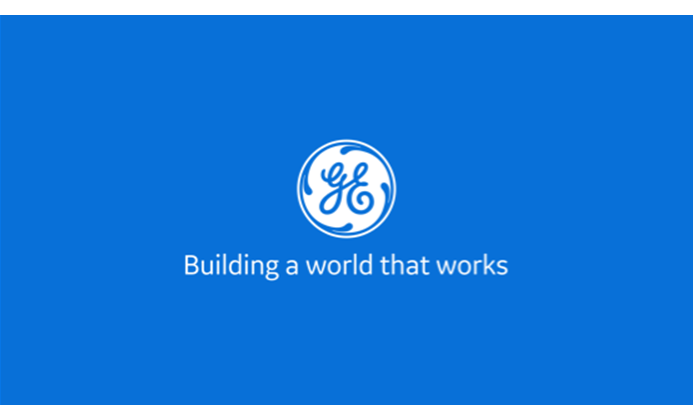
September 26, 2019

RENEWABLES’ TIME TO SHINE
Countries around the world are working hard to realize ambitious renewable energy goals they’ve set for themselves — Sweden, for instance, is aiming to go 100% carbon-free by 2040. It’s more than just a matter of installing more wind farms and solar arrays, though. The transition will also require a whole battery of technological advances to integrate sources like wind and solar onto the grid. Like, well, batteries — specifically, grid-scale systems that can use at night the stored electrons generated while the sun was shining, and fast, efficient gas turbines that can ramp up quickly and step in when it’s not. GE has been at the forefront of renewable energy since before it was even a company: Earlier in his career, GE founding partner Charles Brush built the world’s first power-generating wind turbine in Cleveland. It was a good outing, but suffice it to say that the tech has advanced a bit since 1887.
It’s a breeze (or a waterfall): This week, GE engineers are talking about their tech at the WaterPower Canada Conference in Montreal. One of GE Renewable Energy’s forays into the field is pumped storage hydropower, a fancy name for an elegant concept that uses excess electricity, including from renewables, to pump water uphill to a reservoir. Later, when solar generation wanes, the water is released back to a reservoir at lower elevation, passing through hydroelectric turbines on the way. But that’s just the surface of the reservoir, so to speak. GE is also developing towering wind turbines, sophisticated monitoring software and grid-scale batteries for solar storage — while building a comprehensive vision for the energy system of the future. Record-breaking gas turbines and the latest grid technology help make the energy transition run smoothly.
Click here for a roundup of GE Reports stories from the road to renewables.
SENSE AND SENSITIVITY
Operating rooms are where patients receive surgeries that can change or even save lives: a new knee, a new heart. But those rooms are also the nexus of many streams of information hospitals need to collect to ensure that surgery is successful. There are patient medical records, for starters, like X-rays, medication and family history. But a surgeon also needs to know, for instance, what anesthesiologists are on call to assist in the surgery. The challenge is that not everyone who cares for the same patient needs access to all of the pieces of information. Some need to be more secure than others. The same applies to power plants, military facilities and any other institutions that rely on a combination of public and restricted data. Now GE Research, GE Aviation, Dartmouth College and chipmaker Xilinx are working on technology to make that job easier.
For your eyes only: The collaboration has just received an $8.6 million grant from the Defense Advanced Research Projects Agency to develop a monitoring and inspection device, or MIND for short. The size of a shoebox, the device will hook up wherever data enters or leaves a system and act as a kind of gatekeeper, sorting incoming information with an advanced form of filtering. In military applications, it can ensure that sensitive data go only to leaders with top-secret clearance — but that performance information, say about a transport plane and its fuel level and wear and tear, will be accessible to ground crews servicing the aircraft. The grant will allow the team to build a proof of concept, said GE Research’s Bill Smith: “This is about showing a path forward.”
Learn more here about how Smith’s team is developing the tech to sort sensitive information.
THE DOCTOR WILL SEE YOU NOW
Though the automation of work has caused some people to worry about the rise of the robots, there’s a glass-half-full approach to take here: Automation can handle the tasks humans find dull or repetitive, freeing workers up to focus on what’s more meaningful. That’s true in the medical profession, where doctors must spend countless hours analyzing images to make diagnoses, for instance — time that could otherwise be devoted to one-on-one interactions with patients. Now comes more good news on that front: According to a review in Lancet Digital Health, artificial intelligence isn’t just up to the task of making medical diagnoses based on images — its performance is on par with that of human doctors.
Digital triage: Say somebody goes to the ER with difficulty breathing. That could relate to any number of conditions including heart trouble, but to rule out a collapsed lung, doctors will often order a chest X-ray — which needs to be read by a radiologist. While radiologists examine one X-ray image at a time, though, AI can run through hundreds of images in minutes and call their attention to anything that looks suspicious, helping doctors sort cases to make sure they focus on the most critical ones first. GE Healthcare has woven AI technology into its Critical Care Suite, a set of algorithms embedded in a mobile X-ray device that doctors are using in pilot programs in U.S. hospitals this year. There is more: A startup residing in the Health Innovation Village at GE Healthcare in Helsinki is using AI to help with diagnostics, and digital solutions designed by GE and its partners are easing communications in hospitals, creating digital platforms that ensure every medical professional has the information they need for a job done right.
Learn more here about the British study on AI’s promise in medical diagnostics, which tamped down hype while clarifying what AI can do.
— VIDEO OF THE WEEK —
— QUOTE OF THE DAY —
“The grid is the largest Swiss clock ever made. Fine-tuning and precision are everything.”
— Vera Silva, chief technology officer at GE Grid Solutions
Quote: GE Reports. Image: GE Renewable Energy.
ENJOY THIS NEWSLETTER?
Please send it to your friends and let them know they can subscribe here.




